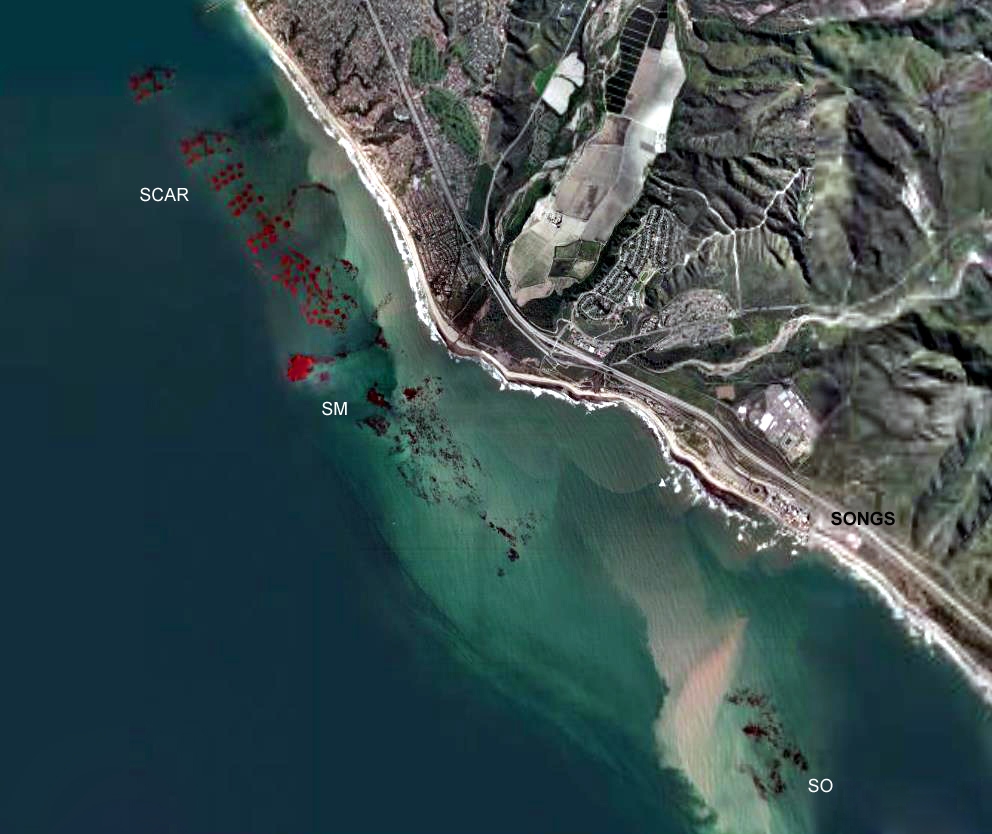Satellite image showing the surface canopy of giant kelp on the 56 experimental reef modules of the San Clemente Artificial Reef (SCAR), and on the nearby natural reefs at San Mateo (SM) and San Onofre (SO). SM was one of two reference reefs used to evaluate the performance of SCAR. SO is the reef that is adversely impacted by the SONGS discharge plume. Image courtesy of Google
Five years of post-construction monitoring of the experimental reef were completed in December 2004. Results from the five-year experimental phase were quite promising in that all artificial reef designs and all seven locations (i.e., blocks) tested showed a near equally high tendency to meet the performance standards established for the mitigation reef. It was concluded from these findings that a low relief concrete rubble or quarry rock reef constructed off the coast of San Clemente, California had a good chance of providing adequate in-kind compensation for the loss of kelp forest biota caused by the operation of SONGS Units 2 and 3.
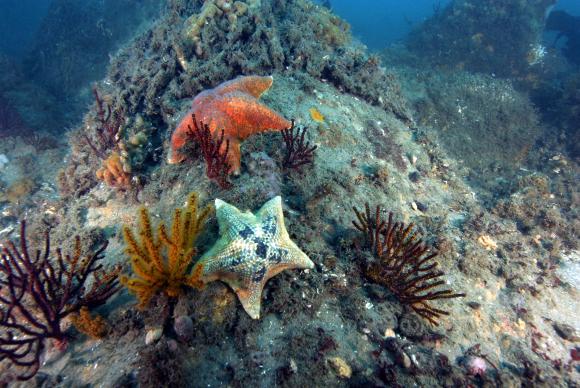
Bat stars foraging among young sea fans on the experimental reef. Photo Credit: Richard Herrmann
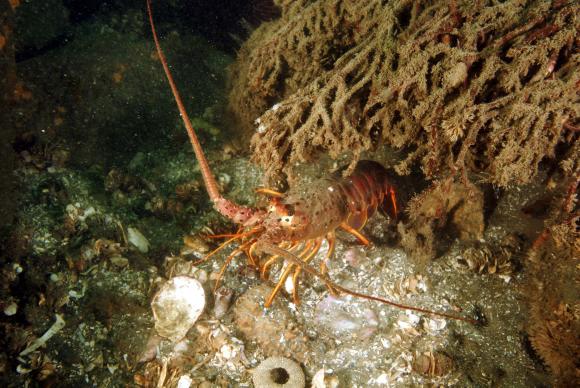
The spiny lobster Panulirus interruptus emerging from a giant kelp holdfast. Photo Credit: Richard Herrmann
A final report on all the findings and recommendations gleaned from the experimental phase of the artificial reef was prepared by UCSB scientists and submitted to the Executive Director of the CCC on August 1, 2005. These findings and recommendations formed the basis of the Executive Director’s determination that: (1) the mitigation reef shall be built of quarry rock or rubble concrete having dimensions and specific gravities that are within the range of the rock and concrete boulders used to construct the SONGS experimental artificial reef, and (2) the percent of the bottom covered by quarry rock or rubble concrete on the mitigation reef should average at least 42%, but no more than 86%. The Commission concurred with the Executive Director’s determination for the type and percent cover of hard substrate on October 12, 2005.
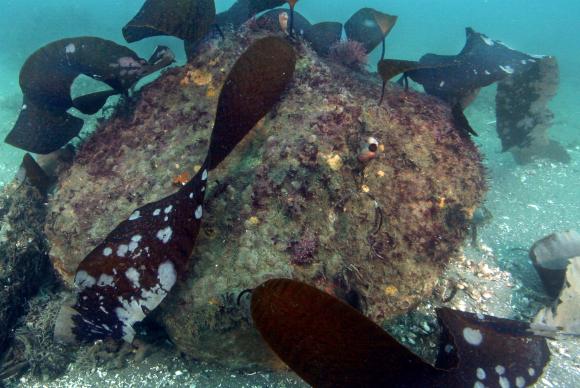
The oar kelp Laminaria farlowii on quarry rock boulders. PhotoCredit: Richard Herrmann
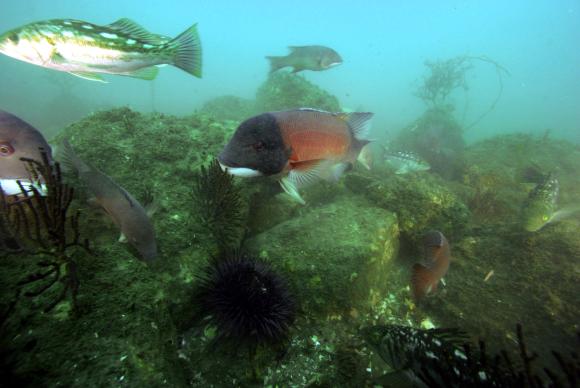
Sheephead wrass and kelp bass aggregating on a rock module. Photo Credit: Richard Herrmann
